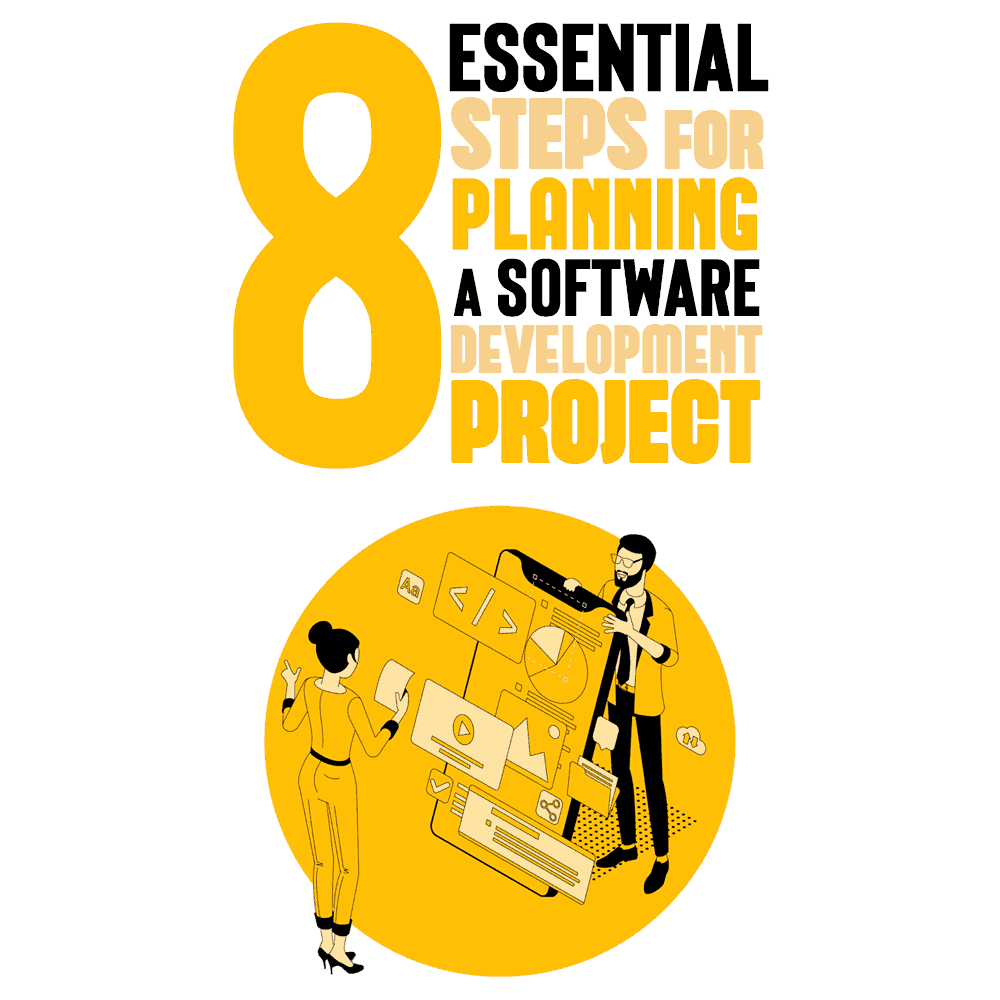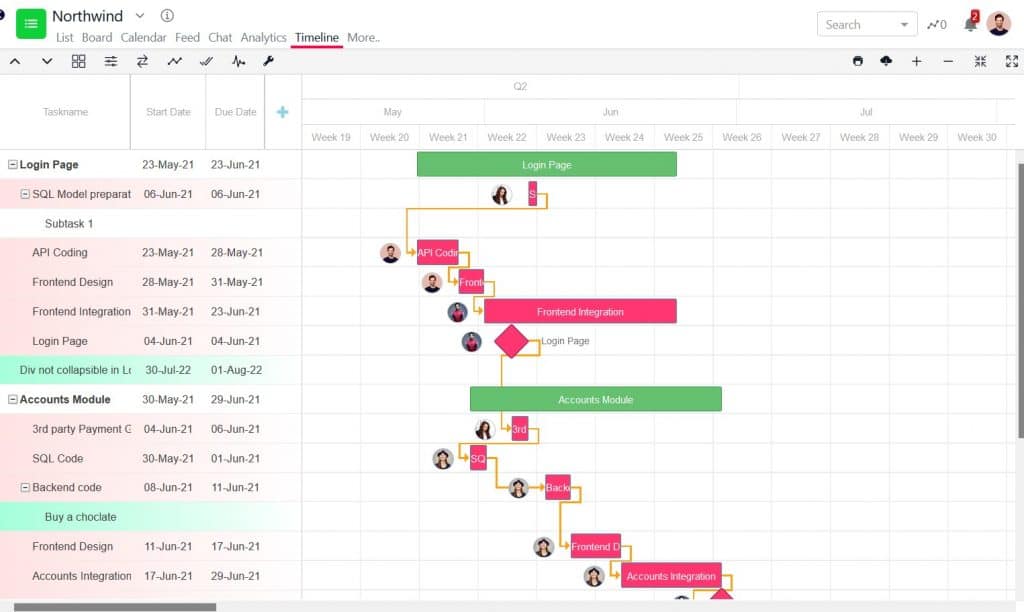
Whether you work on a client project or your own project, without proper planning, the project can easily go off track, and you may have to face scope creep, over budgeting, delays in product delivery, client dissatisfaction, and many other problems.
Many times, clients are non-technical, and it is hard to explain to them why certain things don’t go as planned, why the project is delayed, and why you need more resources.
That’s where effective planning of software development projects comes into the picture. In this blog post, I’m going to answer what is software development project planning and what are the steps involved in planning a software development project.
What Is a Software Development Project Plan?
A software development project plan describes the activities and resources needed to successfully deliver a project. The plan outlines all the phases of the project, including planning, ideation, design, and development, testing, documentation, deployment, launch, and maintenance.
An effective software development project plan covers everything from the concept, project brief, and requirements to defining timeline, allocating tasks, monitoring project progress, assessing costs and resources, managing risks, and everything in between.
That’s why software development project planning plays a vital role in successfully delivering a quality product. Without a proper plan in place, you’d risk facing too many issues during the execution of the project, which will lead to delays in project delivery, over budgeting, client dissatisfaction, low team productivity, and, ultimately, poor quality final product.
Generally, a project manager plans the project with the responsible team members and stakeholders involved. This plan should clearly answer the following questions:
- Which functionality is selected to solve this problem?
- Which activities need to be performed to develop the selected functionality?
- What is the timeline of the project?
- Who is involved in the project, and what are their roles and responsibilities?
- How is the work distributed among team members, and who is responsible for what?
- What metrics and key performance indicators (KPIs) will define the efficiency of the project and the quality of the final product?
If something goes wrong and the team goes off track during the execution phase, they should be able to come back on track with the help of the development plan.
The benefits of software development project planning are numerous. It helps you develop more cost-efficient and reliable software in much less time, with no stress at all. It also eliminates miscommunication among team members, as goals are clear to everyone.
Planning and executing software development projects is much easier now than it was 20 years ago. Today, there are many project management software tools available such as Jira, Asana, SmartTask, etc., that can help you manage the most complex software development projects with ease.
The need for these tools has peaked, especially after the COVID-19 pandemic when, all of a sudden, everyone started working remotely. These tools help remote development teams manage projects and collaborate from one platform.
These project management tools allow you to create various project phases, create a product roadmap, create milestones, assign tasks, set dependencies, set due dates, monitor project performance, track KPIs, manage team workload, collaborate, and much more.
Now let’s dive deeper into the most important part of this post—a step-by-step process for planning a software development project.
8 Steps for Planning Software Development Projects
Software development is a complex process that goes through various steps, and having a proper plan in place is important in order to visualize and follow each step of the development.
As a project manager, tech lead, or software engineering manager, you’re responsible for your team’s performance, quality of the software, client communication, and alignment with business goals.
So here are the steps for planning a software development project.
Step 1: Defining Project Goals
Defining project goals is the first step in your software development plan. It determines the feasibility of the project. You have to answer the following questions in this step:
- What is the purpose of the project?
- What are the needs of the project?
- What are the project specifications?
This step is connected to the technical requirements and project scheduling steps, as we’ll see right below.
Step 2: Technical Requirements
The next step is defining the technical requirements of the project. It is important to finalize the technical requirements needed to successfully deliver the final software product.
In this step, you need to decide:
- The team responsible for the development.
- The technical aspects, such as what issue the project solves, who the end-user is, what the security requirements are, technology needs, methods of testing, hardware requirements, type of methodology (Scrum, Kanban, or Waterfall), and so on.
- The milestones of the project.
By documenting the technical requirements, you are also able to understand and assess the risk involved in the project.
Step 3: Project Scheduling
Now comes the most critical step—project scheduling, which is one of the most important steps in software development project planning. It gives you a clear overview of the project, from ideation to deployment.
Scheduling involves breaking down the work into tasks and subtasks, allocating resources, and estimating time and budget.
Nowadays, many project management tools are available—such as Asana, SmartTask, Jira, etc.—that can help you with your project scheduling. You can utilize a Gantt chart or timeline view to visualize your plan and track your project smoothly, as shown in the image below.

These software tools also allow you to manage allocated resources, break your project into milestones, and keep an eye on important key performance indicators whenever you want.
These days, project managers struggle to implement scrum practices, and that’s where software tools like Jira come into the picture, which is built around scrum.
Although Jira is more focused on collaborating during the development phase, software tools like SmartTask or Asana can help project managers in both the planning and development phase. These tools also offer project portfolio features that allow project managers to handle multiple projects in one place.
The quality of your planning also determines the success of the project and the quality of the final deliverable. A detailed and well-thought-out scheduling makes it easier to follow the timeline and prevent issues along the way.
While planning, you need to decide the following:
- The approximate timeline and main stages of the development.
- Assign tasks & subtasks to each team member.
- Time and cost estimates.
- Ways to communicate with the team, clients, and stakeholders.
- Documentation of everything.
According to Alex Circei, CEO & Co-Founder of Waydev, “Nothing is set in stone when it comes to software development, since it’s always a complex process to handle, so adaptability is key.”
Your plan should not be rigid; it must be flexible and adaptable.
Step 4: Designing and Prototyping
The next step in the software development project planning is designing and prototyping. The software architects and engineers create a blueprint of the software that shows the functions and interactions of the product.
Feedback is collected from the selected users on the prototype to see if any changes are needed in the proposed features.
Step 5: Development
Once the design is finalized, and feedback is collected on the prototype, the next step in the software development project is the development of the product—one of the hardest and most time-consuming steps.
Now the software development team can start working on the solution according to the project scope and requirements.
Step 6: Quality Testing
Another critical step in a software development project is quality testing. After the development stage, it is important to check that the software meets the project requirements, meets budget and time estimates, code quality, and other relevant metrics.
This step allows you to find and fix any bugs the software has and deliver a bug-free and useful software product.
Many times a separate testing team is assigned to perform the quality testing operations, and most of the time, this step can also be outsourced. When it comes to testing, in particular, I recommend reading Testing Computer Software by Cem Kaner, Jack Falk, and Hung Q. Nguyen.
Step 7: Deployment
This is the final stage of the software development project. Finally, the hard work done by the development team is put into action with the deployment of the final product. The software is made live to the end-users.
In many cases, deployment needs to be done multiple times during the development and testing stages before the final deployment.
These days developers utilize low code or no-code platforms to perform quick cycles of rapid prototyping, testing, and deployment.
Step 8: Maintenance and Support

Every software product needs some sort of maintenance or advanced updates regularly to fulfill the ever-evolving requirements of the end-users. And that’s why this step becomes very important.
Follow this Planning Guide to Success
And that’s the 8-step process for effectively planning a software development project. Planning plays a crucial role when it comes to developing software products from scratch. I highly recommend using project management software like SmartTask or Asana to effectively manage and track your software development projects.
These tools allow you to plan your projects, create timelines, break down projects into milestones, create tasks and subtasks, set deadlines, distribute work among team members, manage team’s workload, set dependencies, collaborate with teams, track project’s progress, and so on.
I hope you now have a better understanding of how to plan software development projects effectively. If you still want to go more deeply into this topic, I recommend reading Ship it! A Practical Guide to Successful Software Projects, by Jared Richardson and William A. Gwaltney.
